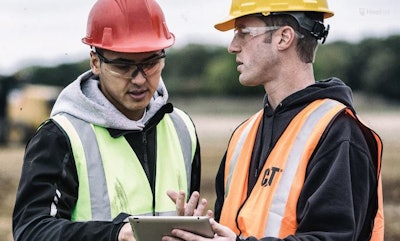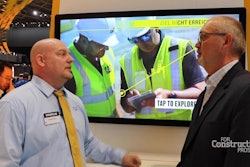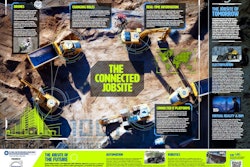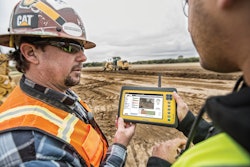
What construction equipment manufacturers and hardware/software developers envisioned as a more productive, profitable digitally driven worksite exists—now. With today’s technology you can clear a commercial site, lay the groundwork for a housing development or build a section of road from site assessment through project management, evaluation and straight to billing without creating a single piece of paper.
Digital technology enhances what you’ve always done—by making your operation highly accurate, less wasteful and more cost effective. And, now’s the time to get started—or risk being left behind. This window of opportunity won’t last forever. Markets are going to mature, and companies who fall behind will face greater challenges to their profitability than those who engage early. It’s time to stop talking and start making more money.
3 big advantages to taking worksites digital
- Manage your equipment costs
With the introduction of the Association of Equipment Management Professionals (AEMP) Telematics Standard, more systems are working to give you access to mixed fleet data such as equipment location, fuel consumption, and operator behavior. From your laptop or phone, you can see where your equipment is working, how much fuel it’s consuming and how productive it is. Data access also gives you total control over maintenance and repair needs. Downtime is minimized. No more surprises. And, lessons learned from each job make you more effective on the next. For example, you see a dozer’s productivity is down 15 percent, but then you see that it’s working in sticky clay. On the next job that includes 50 percent sticky clay in the landscape, you can predict the slowdown in productivity and estimate for it.
- Make the most from your fleet
The more connected your equipment and crew is, the faster you can identify where the problems are and course correct. Do you need more equipment on the site? Maybe you don’t need as many machines as you rented. And because you have the ability to track the amount of material moved that day or week, you can track productivity and where you are in terms of what you bid for the project.
- Take your operators to the next level
Equipment that offers machine control and/or automatic functions will help operators make a positive impact on your bottom line – quickly. You can expect to be able to reduce your rough-grading costs, slash your finish-grading costs, and place your materials more accurately and consistently. Being able to control your material is a huge advantage. Your operators are making a lot fewer passes to get on grade. If you’ve got to put 6 in. of rock on a 100,000-sq.-ft. project with the spec at an inch, and your operator can do it within a half an inch, that’s a lot less material you have to buy and place.
Technology allows your operator to manage the task and the material, not just the machine. It helps a decent operator become outstanding, and it helps an inexperienced or unskilled operator to become adequate. As a result, it can help you overcome any shortage of skilled labor by expanding the pool.
Best starting point for worksite technology?
The good news is that you don’t have to jump in on a grand scale to see the benefits that technology and connectivity can bring to your work. For example, you can take advantage of your telematics data-feed capabilities as soon as you activate the feeds and log into a reporting interface like VisionLink.
If you’re running a smaller fleet, you will likely be more interested in machine technologies that deliver rapid increases in productivity. Those investments are usually recovered relatively quickly and can generate more revenue for additional technologies. Larger fleets or fleets working multiple projects simultaneously will want to create a technology plan based on existing data capabilities and most cost effective equipment and technology pairings.
Site specialists recommend that you concentrate on what you’re trying to do, the type of machines you use and what seem to be your biggest problems. Be realistic about your limitations and areas in the organization where you’re not being as productive as you want to be or are potentially losing money. Focus on how technology can help you with these.
Technology empowers your people
Taking your worksite digital means the decisions on site are not going to be made exclusively from the “main office.” It means you believe that your people are capable and committed. By building more connected worksites, more information will be delivered to the right people at the right time, so they can make the decisions they need to get the job done right.
Technology also adds to the safety of all the people who work and visit your sites. Plus, it is a constant monitor that can alert operators and foremen to unsafe conditions before they become something more.
As more machines are connected on the worksite, the better efficiency, accuracy and productivity can be measured. The primary goal of the digital worksite is to make the work less complicated, margins healthier and lives better.
[VIDEO] Caterpillar Measures How Much Time Technology Can Cut from Road Building



















